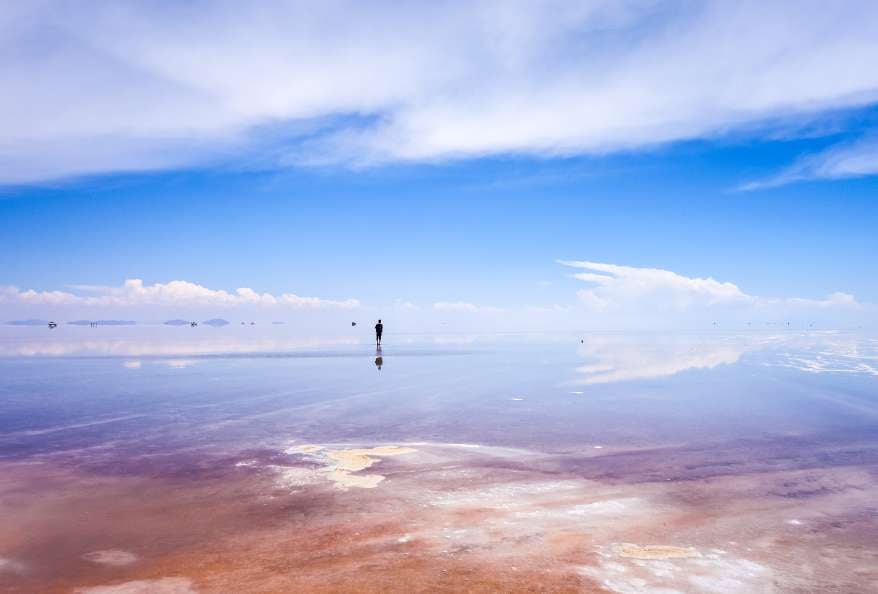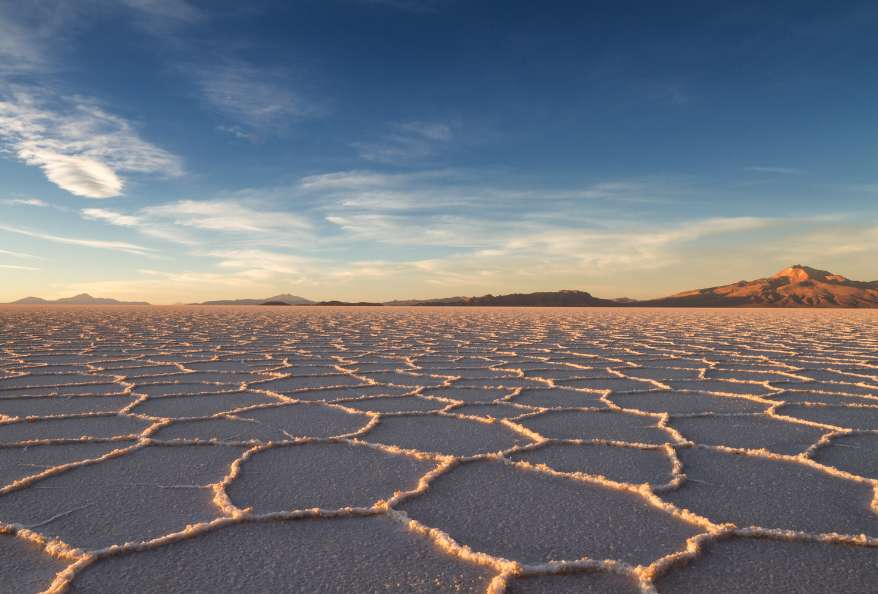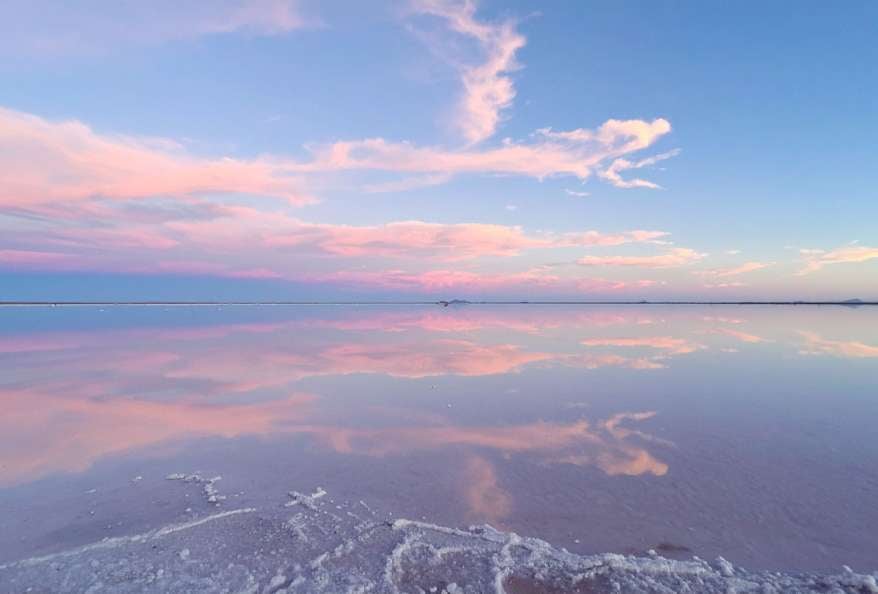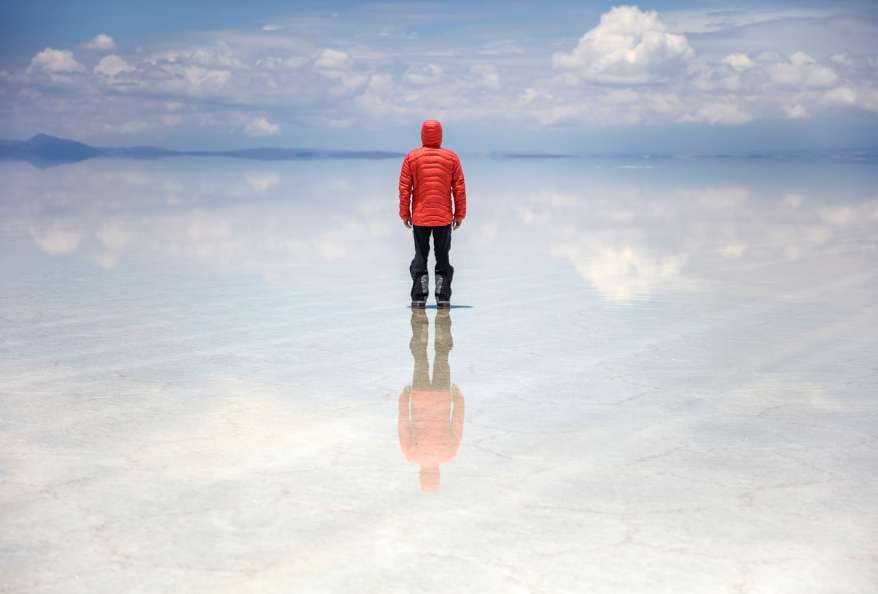3 Surprising Facts About the World’s Largest Natural Mirror
Picture yourself standing on a vast white plain. The ground looks endless, shining under the sky. You see the world’s largest salt flat: Salar de Uyuni Bolivia, covers 10,582 square kilometers. No other salt flat matches its size. So, is Salar de Uyuni still the World’s Largest Natural Mirror? Lets take a deeper look.
You might hear people call it a giant mirror, but new research says the mirror effect only appears during the rainy season. Moreover, the best time to see the mirror is late January to early March. The surface changes with rainfall, so you will notice different views each visit. Get ready for surprising facts and discoveries.
World’s Largest Natural Mirror
Area and Scale
You probably wonder how big the world’s largest natural mirror really is. Salar de Uyuni covers about 10,582 square kilometers. That makes it the largest salt flat on Earth. Additionally, you can find the Salar in the Daniel Campos Province, in the Potosí region of Bolivia. The salt flat sits in the western part of the country, close to the border with Chile. When rain falls, this massive salt flat transforms. A thin layer of water spreads across the surface. Hence, you see a stunning reflection that stretches for miles. The mirror effect is so vast, you can spot it from space.
Scientific Debate
Scientists still debate the official status of the world’s largest natural mirror. You might think it’s easy to measure, but it’s not. Here are some reasons why:
- Firstly, measuring the smoothness of the surface is tricky.
- Data about the surface changes often.
- Field studies are needed to check satellite results.
- Also, satellite radar altimetry helps track water surface changes.
- In February 2024, researchers conducted the first field survey to confirm satellite data.
During the rainy season, rainwater fills the pores of the salt flat. Therefore, this process creates a smooth, level surface. The annual cleansing and re-sedimentation keep the mirror effect alive. Similarly, some experts say more research is needed before making it official. You see, the world’s largest natural mirror is still a mystery in some ways.
Comparison to Other Sites
Other Salt Flats
You might ask if other places compete for the title. Thus, there are other salt flats around the world, like Bonneville in the USA and Etosha in Namibia. But, none match the scale or the mirror effect of Uyuni. Most salt flats do not have the same flatness or seasonal water layer.
Unique Features
What makes Uyuni stand out from other salt flats? Take a look at this table:
| Features | Description |
|---|---|
| Formation | Formed from ancient lakes, Lake Minchin and Lake Tauca. Later, dried up over time. |
| Flatness | Elevation changes less than one meter across the surface. |
| Lithium Brine | Under the salt crust, there is lithium-rich brine. |
| Natural Mirror | Rain creates a thin water layer, forming the world’s largest natural mirror. |
| Surrounding Landscape | Volcanic rocks called yardangs, shaped by wind erosion. |
You can also find yardangs formed by volcanic activity during the Miocene epoch. The salt flat’s history goes back almost 12,000 years. Indeed, it started with ancient saltwater lakes and the breakup of Lake Minchin 33,000 years ago. Uyuni’s unique geology and environment set it apart from every other massive salt flat.
You see the world’s largest natural mirror because of three things:
- The rainy season creates a thin, smooth water layer.
- Secondly, the salt flat is very level and bright.
- The water and salt together reflect light like a giant mirror.
Salar de Uyuni Mirror Effect

How it Happens
Rainfall and Water Layer
You might wonder how this giant mirror forms. The secret lies in the rain. When the rainy season arrives, water pools on the salt flat. Further, the water layer can reach up to 20 inches deep. Thus, this thin layer spreads across the flat surface. You see a reflection of the sky that looks endless. The salt becomes impermeable, so water stays on top. The best time to see this mirror-like surface is from mid-January to late February. During these weeks, the salt flat turns into a reflective lake. The rain creates the perfect conditions for the mirror effect.
Salt Surface Reflection
The salt crust plays a big role in the mirror effect. The crust is made of halite, or sodium chloride. Its flat, crystalline structure creates a smooth surface. When water covers the salt, the surface becomes even more reflective. The vast area and high elevation let you see huge reflections. Moreover, the salt flat’s unique geography helps create this stunning mirror. Recent studies show that the flatness allows rainwater to spread evenly. This makes the mirror effect possible over such a large area.
Environmental Factors
Seasonal Changes
The mirror effect does not last all year. You only see it during the rainy season, from December to March. Water collects on the surface, turning the salt flat into a giant mirror. The depth of the water and the light conditions change the reflection. Eventually, each visit gives you a different view. The flatness and water depth make the mirror effect unique every time.
- The rainy season brings water that pools on the surface.
- The flat surface and water depth create perfect reflections.
- Light conditions change the intensity of the mirror effect.
Weather Impact
Weather plays a big part in the mirror effect. However, you get the best views in the early morning or late afternoon. Low-angle sunlight makes the reflections brighter. Calm winds help keep the water still. If the wind picks up, the surface ripples and the mirror fades. A thin layer of still water is key for the best reflection.
- Low-angle sunlight boosts the mirror effect.
- Calm winds keep the surface smooth.
- Still water is needed for clear reflections.
Recent radar and satellite studies help scientists understand the surface. ICESat/GLAS altimetry and MISR-based bathymetry show the salt flat is almost perfectly level. Thus, these studies found that the surface changes very little over time. Additionally, the water depth varies from 30 to 50 centimeters during floods. The salt flat has some ridges and depressions, but most of it stays smooth. This consistency helps keep the mirror effect strong each year.
World’s Largest Natural Mirror: New Discoveries!

Scientific Studies
You see new research happening at Salar de Uyuni. Scientists study the salt flat’s water levels and surface changes. They use satellites and drones to track the mirror effect. International groups look at water loss and biodiversity. Hence, they call for better environmental impact assessments. You notice more attention on protecting wetlands and respecting local rights.
Environmental Changes
You hear about big changes in the region. Drought affects local communities and wildlife every day. Farmers lose llamas and alpacas because water and food are scarce. Lithium mining makes water shortages worse for people living near the Salar. Moreover, many families move away because they cannot grow food. You see how climate and human activity shape Uyuni’s future.
- Water scarcity hurts people and animals.
- Lithium mining increases water problems.
- Families leave because of drought and food issues.
Conservation Efforts
You see new rules for visiting the salar. The Bolivian government limits the number of visitors. Conservation projects protect the salt flat and nearby areas. Tour operators teach responsible tourism to visitors. Hence, you learn about education programs for locals and tourists. Therefore, these efforts help keep Uyuni beautiful for future generations.
- Visitor numbers are regulated.
- Conservation projects protect the Salar.
- Responsible tourism is promoted.
World’s Largest Natural Mirror: Unique Aspects
Cultural Significance
Local Traditions
You find rich traditions at Salar de Uyuni. The Aymara New Year takes place here every June. People gather to celebrate and honor their ancestors. You see rituals like llama sacrifices offered to la Pachamama. These acts show deep respect for nature and spiritual beliefs. The salt flat becomes a sacred space during these events. Certainly, you notice how the celebrations connect people to their heritage.
- The salt flat hosts important Aymara ceremonies.
- Locals perform rituals to honor the earth goddess.
- Visitors join in and learn about ancient customs.
- Animal husbandry, like llama herding, remains central to daily life.
- Royal Quinoa cultivation supports local families.
Bolivian Identity
You sense pride in Bolivia’s connection to the salt flat. Salar de Uyuni shapes the country’s image worldwide. The mirror effect draws attention to Bolivia’s natural wonders. Indigenous communities see the salt flat as a symbol of resilience. Furthermore, you hear stories about the land’s role in shaping local identity. The salt flat stands as a reminder of Bolivia’s rich history and culture.
Economic Role
Lithium Reserves
You discover that Salar de Uyuni holds vast lithium reserves. Bolivia has up to 23 million metric tons of lithium. Thus, this makes it the largest deposit in the world. Simultaneously, some estimates say the salt flat contains between 5.4 and 23 million tons. The government seeks foreign investment to develop these resources. Lithium extraction promises economic growth for local communities.
Sustainability
You notice challenges with lithium extraction at the salt flat. The process uses large amounts of water. Therefore, this threatens local ecosystems and communities. Indigenous groups express concerns about resource management. New technologies, like direct lithium extraction, aim to reduce harm. Efforts to engage Indigenous communities continue. However, solutions remain incomplete and do not address all issues.
- Water use creates risks for people and wildlife.
- Governance and resource management need improvement.
- Indigenous voices call for fair and informed consent.
- Technology helps but does not solve every problem.
Local communities see lithium extraction as a path to progress. Thus, they hope for a future with more wealth and less exploitation. Some remain skeptical about the real benefits. You hear debates about leadership and promises for change. The salt flat’s future depends on balancing growth and sustainability.
Salar de Uyuni: Mysterious Facts

You might think you know everything about the salt flats. However, Salar de Uyuni hides many secrets. Travelers and scientists keep finding new surprises every year. Let’s explore some of the most mysterious facts that make this place so unique:
- The flat sits at a high altitude of 3,600 meters. This height gives you clear skies and cold nights. You need time to adjust to the thin air.
- The salt flats contain minerals like lithium, magnesium, potassium, and borax. Thus, these minerals attract mining companies from around the world.
- Flamingos thrive here because tiny shrimp live in brine pools. The shrimp give flamingos their bright pink color.
- When rain falls, shallow pools create a stunning mirror effect. Sometimes, you lose your sense of direction because the sky and ground look the same.
- The surface changes often. You see bizarre salt formations. The ground looks like a giant honeycomb. Thus, these patterns form because salty water moves slowly under the surface, just like boiling water.
- Ancient volcanoes surround the region. Their shapes reflect in the water, creating breathtaking views.
- The climate stays cold. Daytime temperatures rarely go above 70 degrees Fahrenheit. You need warm clothes, even during the day.
- Rain falls mostly between January and April. This is the best time to see the mirror.
More Facts
Recent scientific studies reveal even more mysteries. Researchers use satellites, drones, and radar to study the salt flat.
You notice that the surface does not stay the same. Rainfall patterns change the smoothness and reflectiveness. Scientists found that the mirror effect peaks from late January to early March. Even then, only half the surface reaches radar smoothness. Some areas show wrinkles and cracks, which affect the mirror.
Researchers studied over 390,000 radar measurements. They learned that the surface changes all the time. Ground teams confirmed that some spots have wrinkles. These changes depend on the weather and water levels.
You see that Salar de Uyuni is more than a pretty sight. The mysteries keep drawing people back. Every visit feels different. You never know what you will discover next.
World’s Largest Natural Mirror: Conclusion
You see, Salar de Uyuni’s status as the world’s largest natural mirror remains complex. New research shows the mirror effect depends on rainfall and changes over time. Hence, you learn that Bolivia’s lithium reserves shape its future and global reputation. Similarly, satellite studies reveal the salt flat is not always a perfect mirror. If you visit, respect the land and local traditions.
Reference
- Vignudelli, S., Abileah, R., Mollinedo, P. P., & De Biasio, F. (2025). Satellite radar altimetry reveals spatial and temporal changes in water surface smoothness in the Salar de Uyuni, Bolivia. Communications Earth & Environment, 6(1). https://doi.org/10.1038/s43247-025-02715-1
- De La Serna Torrez, G. E., & Almendros, E. C. (2024). Examining Bolivia’s Destination Image through the Lens of Alternative Tourism: An Analysis of Content Generated by Travel Tools 2.0. Journal of Tourism and Leisure Studies, 9(1), 1–29. https://doi.org/10.18848/2470-9336/cgp/v09i01/1-29
Additionally, to stay updated with the latest developments in STEM research, visit ENTECH Online. Basically, this is our digital magazine for science, technology, engineering, and mathematics. Furthermore, at ENTECH Online, you’ll find a wealth of information.






